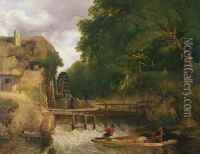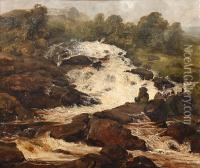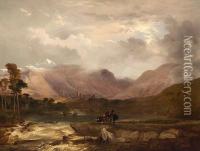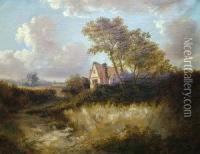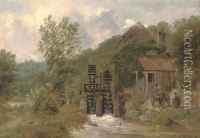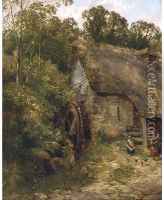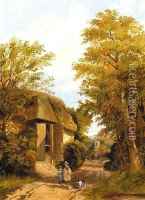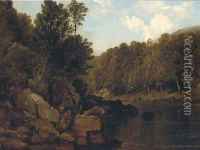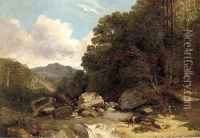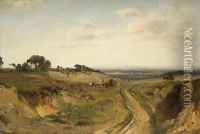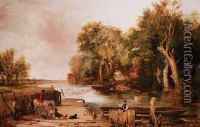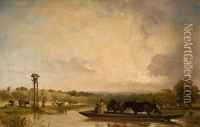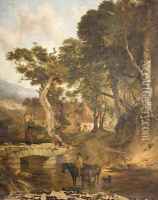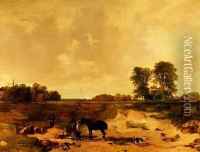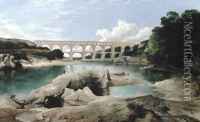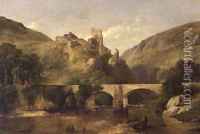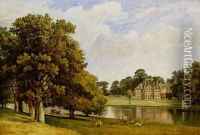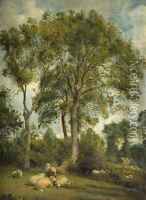Frederick Richard Lee Paintings
Frederick Richard Lee, born on June 4, 1798, in Barnstaple, Devon, England, was a notable 19th-century British artist known for his landscape paintings. Lee entered the Royal Academy Schools in 1818, where he studied under prominent artists of the time. He became an Associate of the Royal Academy (ARA) in 1834 and a Royal Academician (RA) in 1838.
Lee's artistic career was marked by his attention to realistic detail and his ability to capture the essence of the British countryside. His works often featured rural scenes, coastal views, and pastoral landscapes, distinguished by their naturalistic portrayal and serene atmosphere. He was particularly skilled at depicting the effects of light and shadow, which added a sense of depth and realism to his paintings.
Throughout his career, Lee exhibited a number of works at the Royal Academy and other venues. He was highly regarded by his contemporaries and enjoyed considerable success. In addition to his landscape paintings, Lee also produced several successful animal paintings, which were praised for their accuracy and vitality.
In his later years, Lee's reputation continued to grow, and his works were sought after by collectors and art enthusiasts. Despite his success, Lee chose to live a relatively private life away from the public eye. He retired to Vleesch Bank, near Phillippi in Cape Colony (present-day South Africa), where he continued to paint and indulge in his passion for the arts until his death on June 5, 1879.
Lee's legacy is preserved through his contributions to British landscape painting, and his works remain in various collections, including those of major museums and galleries. His dedication to capturing the natural beauty of the English landscape has left a lasting impression on the art world and continues to be appreciated by art historians and enthusiasts alike.
